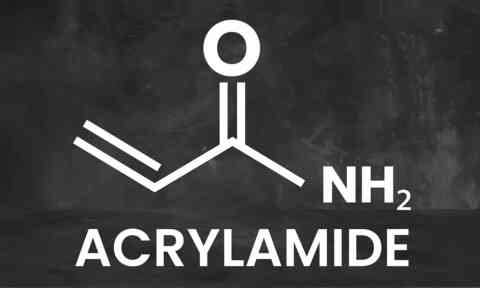Acrylamide

What is it?
Acrylamide is a natural by-product of the cooking process and is formed when starchy foods are cooked at high temperatures. There is concern that acrylamide is a possible carcinogen following studies on animals. It was discovered in 2002, but is likely that it has been present in food since cooking began. Acrylamide can be present in a range of foods, including crisps, coffee and even prunes. This article focuses on acrylamide in baked goods made from wheat.
What does the law say?
The European Commission has set indicative levels for acrylamide in baked goods, including bread. At the moment, it is recommended that European member states carry out investigations in cases where acrylamide levels in food exceed the indicative levels. Currently, maximum levels for acrylamide in processed cereal-based foods for infants and young children are being discussed. Discussions on acrylamide levels in other foods will begin soon. If maximum levels are established, any products found to contain acrylamide above the maximum levels will be removed from the supply chain.

What is being done?
Farming
The amino acid asparagine is needed for the production of acrylamide. Asparagine is present naturally in wheat, but have been shown to accumulate in higher levels when wheat is grown in sulphur deficient environments and consequently there is a risk of higher acrylamide levels.
Farmers are key to reducing the levels of asparagine in the UK wheat crop. There is evidence that not all milling wheat crops are grown with sufficient sulphur applied to correct sulphur-deficient soils. The Agriculture and Horticulture Development Board (AHDB) recognised this and have funded research to investigate the optimum level of sulphur fertilisation to reduce asparagine in milling wheat and update their guidance to farmers accordingly. More information can be found on AHDB's website.
Milling
UK flour millers are focused on this issue and have been active participants in European discussions and implementation of procedures to reduce acrylamide in baked goods. UK millers use a range of wheat varieties to produce flour and together with the Federation of Bakers, commissioned research to investigate variation in asparagine across varieties. The study found little difference between varieties and so millers do not select their wheat on this basis.
Flour millers continue to fully support measures to reduce acrylamide in baked goods and will support further research to ensure progress is made on the issue. However, it appears that there is nothing that can be done within the milling process to alter either levels of asparagine or the potential for acrylamide formation during baking.
Baking
Most bakeries have ensured that measures are in place to reduce this processing contaminant. This includes adjusting cooking procedures and the addition of the enzyme asparaginase which reduces the asparagine level in dough and thereby the acrylamide level in the cooked product.
A position paper with information on acrylamide in British bread can be downloaded from the left-hand side of this page. UK Flour Millers members can also download the UK Flour Millers Briefing Document on this subject.
Lorem ipsum dolor sit amet, consectetur adipiscing elit, sed do eiusmod tempor incididunt ut labore et dolore magna aliqua. Ut enim ad minim veniam, quis nostrud exercitation ullamco laboris nisi ut aliquip ex ea commodo consequat. Duis aute irure dolor in reprehenderit in voluptate velit esse cillum dolore eu fugiat nulla pariatur. Excepteur sint occaecat cupidatat non proident, sunt in culpa qui officia deserunt mollit anim id est laborum.
